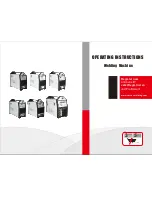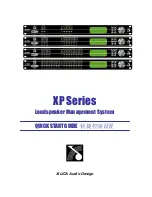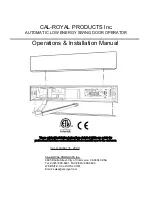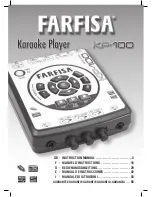
fig. 15
10.2.1. OPPOSED SPOT WELDING
The parameters which determine the diameter and the strength of a spot weld are:
1. The clamp force of the electrodes.
2. The electrode face diameter.
3. Welding current and welding time.
Select the appropriate sheet thickness with key 2 and the welder will automatically select the optimum weld time. This selected time
may be adjusted, by key 1 if necessary.
For example: If the low supply voltage LED is on, the weld time might need to be increased slightly.
If sheets of 0.8 to 1.2mm thick and with a high yield point have to be welded, switch to the pulsation welding mode, key 4.
The pulsation cycle is automatically controlled and requires no user input.
IMPORTANT:
A spot weld is considered satisfactory if, when subjected to a tensile stress test, the weld is torn from one of the
sheets without any separation in the weld itself.
10.2.2. MANUAL CLAMPS
Place the lower electrode on the sheet to be welded. Operate clamping lever, giving:
a) Clamping of the sheets between the electrodes with a pre-adjusted clamp force.
b) A pre-set welding current for the pre-set time. Welding is indicated by the illumination of the green LED .
Release the clamp lever
a few moments after
the LED goes out. This delay in releasing the clamp load improves the mechanical
strength of the weld.
10.2.3. PNEUMATIC CLAMP
Place one electrode on the surface to be welded.
Operate push-button, giving:
Clamping of the sheets between the electrodes with a pre-set clamp force.
A pre-set welding current for a pre-set time.
Welding is indicated by the green LED .
Release the clamp lever
a few moments after
the LED goes out. This delay in releasing the clamp load improves the mechanical
strength of the weld.
Operate the pneumatic clamp with a regulated air supply of 4 to 8 bar.
10.2.4. HOW TO USE THE STUDDER
To assemble or disassemble electrodes use two hex. wrenches, one to prevent the clamp spindle rotating and the other to loosen the
clamp nut.
When working on hinged panels, doors, bonnets, tail gates ensure that the ground cable is attached to the work panel rather than to
the vehicle body, so that current does not pass through the hinges.
10.2.5. HOW TO CONNECT THE GROUND CABLE
a) Base sheet area must be at least as big as the ground bar contact area and should be as near as possible to the welding area.
b) Fasten the copper ground bar to the sheet with an articulated clamp (welding type) or -
spot weld a washer (part of kit) to the surface of the sheet, pass the washer through the opening in the ground bar and clamp it in place.
10.2.6. SPOT WELDING WASHER TO FASTEN GROUND BAR
Mount the special electrode (fig. 15.9) on the clamp spindle and insert washer (fig. 15.13).
Position washer on chosen “ground” area and contact ground terminal on the same area. Press torch push-button to weld washer.
Attach ground bar to washer as above.
10.2.7. SPOT WELDING SCREWS, WASHER, NAILS, RIVETS
Fit the appropriate electrode and place the item to be welded in position on the sheet. Press the clamp push-button and release only
after the green LED goes out.
10.2.
APPLICATIONS & ACCESSORIES (not supplied)
The following text will refer to fig. 15 above for identification.
ElectroSpot 8000/9500.V2 - 2 - 040903
Содержание ELECTROSPOT 8000
Страница 17: ......




































